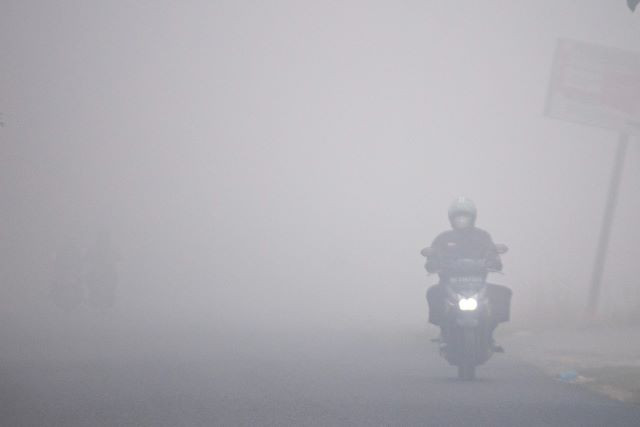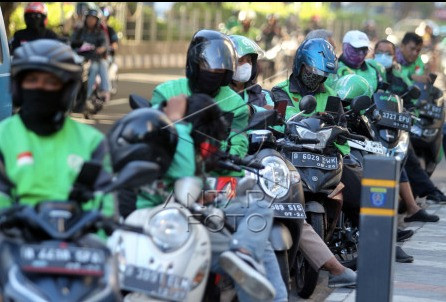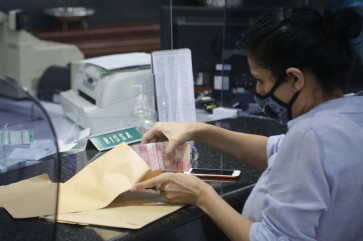Why the ‘new normal’ is not so new for banks
The adjustment to the new normal, though, will more likely be felt in the back-office functions of financial institutions. Prior to COVID-19, remote working was not an option for most back-office operations. Remote working was deemed very risky for a highly regulated industry such as banking.
Change Size
 Paper carrier: A customer counts money she has just withdrawn at Bank Bukopin in Jakarta on June 30. The banking industry has encouraged cashless transactions to help curb the spread of COVID-19. (JP/Wendra Ajistyatama)
Paper carrier: A customer counts money she has just withdrawn at Bank Bukopin in Jakarta on June 30. The banking industry has encouraged cashless transactions to help curb the spread of COVID-19. (JP/Wendra Ajistyatama)
T
he current COVID-19 situation has encouraged individuals and businesses to embrace a new reality dubbed the “new normal” with many strings attached, which has necessitated a drastic transition to daily life.
Almost all aspect of daily life has been altered with physical distancing measures meant to prevent the spread of the disease. This means what was once considered a daily chore or activity, such as commuting to our offices and visiting the mall, have now become less frequent routines.
People now spend more time in video conference sessions and scrolling various e-commerce sites to look for the best deals and promotions to minimize physical interaction with others.
The new normal is not something that is entirely foreign for the front-end business process of the financial services industry. A report by the Boston Consulting Group (BCG) dating back to 2012 has used the term “new normal” to describe changing trends in retail banking, which is very much relevant with the social and physical distancing measures in place as a result of COVID-19.
The report said that a strong mobile banking offering had become a minimum requirement for competitiveness in the industry. Specifically, online channels would be the primary channel for high-volume banking activities such as balance and statement viewing as well as transfers of funds between accounts. These channels enable the customer to have minimal or no physical interaction to receive and use banking services.
The banking industry since then has largely followed the BCG’s prediction. Banks have reduced their physical branch footprints in recent years due to changing consumer behavior. Based on data from the Financial Services Authority (OJK), the number of physical bank branches has seen a declining trend from nearly 33,000 branches in 2015 to just over 31,000 in 2019. Banks have aggressively digitized their operations to go beyond mobile and internet banking apps.
For example, PT Bank Central Asia (BCA), the nation’s largest private lender, recently launched its digital-only banking subsidiary, while banks such as DBS and BTPN have launched digital-only banking account products. The Home Ministry’s online population and civil registry system has made it possible for banks and other financial institutions to conduct the Know Your Customer (KYC) process online without any physical interactions.

















